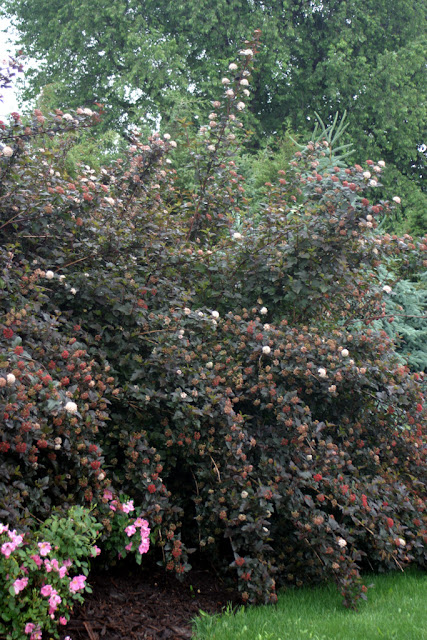It's that time of year when I go out and about giving plant talks. I thought I would give you an update on when and where I will be speaking. In other words, this post is an unabashed attempt at self-promotion so that my audience will be greater than six people (it's happened).
You won't have to travel far to hear me speak on behalf of the WNLA, as I will be presenting a webinar on Wednesday, November 28th, at 1:00 pm eastern/12:00 central time. Join me as we explore the impact of boxwood blight on the future of the nursery and landscape industry and as we take a look at some of the best alternative shrubs that can fill the same niche as box. Sign up today.
 |
| What will become of this family of boxwood? |
 |
| Not just one plant geek, but twelve, all in the same room |
Please join me at the SNA Conference in Baltimore on Tuesday, January 8th. I will be presenting a new talk called "Breakthrough Plant Breeding in Flowering Shrubs," where we will explore a series of unique plant introductions that have changed the way we garden and landscape. Cool stuff, right?
The SNA Conference is a two-day, rapid-fire plant geek fest just before the MANTS show, so come a bit early to hear the greatest lineup of plant geeks ever assembled. If not for me, come and hear Buddy Lee, "the inventor of Encore Azaleas," author and plant geek Paul Cappiello, Mr. Tree Man himself—Keith Warren, Natalia Hamill—the First Lady of new plants, and your Ragin' Cajun plantsman extraordinaire Todd Lasseigne. It is a must-attend event for all plant geeks, so be there, or be normal; it's your choice.
A bit closer to home, I will be giving a talk in Lansing, Michigan, at the 2019 Great Lakes Trade Exposition.

"Shrubs that Will Change the Way We Landscape" is the title of the talk I will be presenting on January 29th at 4:15 pm.
It used to be that shrubs were the bones and background of the
garden. They were big plants that bloomed for two weeks or less and then they
faded into oblivion. All that has changed. Plant breeders the world over have
reinvented the shrub and with that, the way we used them in our gardens and
landscapes. This talk will highlight some of the most interesting breakthroughs
in plant breeding and how designers can use them to make better gardens and
landscapes.
Oh So Popular!
 |
| One plant at a time, Proven Winners has become oh so popular! |
The title of my talk will be "Proven Winners—What has driven our success." The topic was suggested by my friend Scott Beuerlein of the Cincinnati Zoo. I've not yet written the talk, but I think it will be interesting. Proven Winners has a remarkable story, and I am fortunate to have been a part of its growth and evolution. You'll have to attend to find out if the talk is any good or not. Click here to learn more.
 |
| MSU - The birth place of modern horticulture |
My good friend Mary Wilson of the Michigan State University Extension Service is a Badger (a Wisconsin Badger). She insisted that I speak at her Plants of Distinction conference in Novi, Michigan. How could I say no? Rumor has it that David Culp and my friend and fellow Spartan Matthew Ross of Longwood Gardens will join me on February 13th for this event. If you are in the area, come on over and catch my talk, "The Hunt for New Hydrangeas." You'll learn everything and more about hydrangeas and how to grow them. I hope to see you there!
 |
| That's me in a wild patch of hydrangea in Japan. |
Last, but not least, I will be appearing at the DeVos Place in Grand Rapids, Michigan, on Saturday, March 2nd. My friend and fellow Spartan Rebecca Finneran booked me for the Michigan State University Extension Smart Gardening Conference. How could I turn down the nicest person in horticulture? I will be speaking about "Smart Shrubs," the ones that make our lives better, easier, and more joyful. Better than an iPhone, these smart shrubs will amaze you, so mark your calendar and join me in Beer City USA for this special event.
Have a great Thanksgiving holiday! We all have so many reasons to be thankful. I am especially thankful that I work in such a great industry with such friendly and interesting people. Plant people are special. They notice and appreciate the small miracles that happen all around us, every day. I am also very grateful and appreciative to those of you that read my blog. Thank you and thumbs up to you, my fellow plant hunters!
 |
| Two thumbs up plant talks |



























































